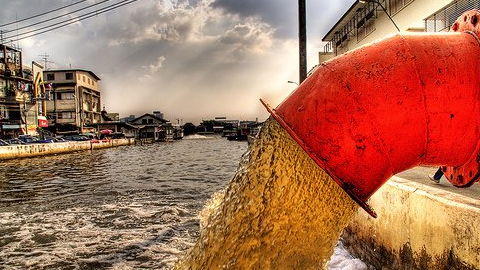1. Heavy metal wastewater
Heavy metal wastewater mainly comes from wastewater discharged from mines, smelting, electrolysis, electroplating, pesticides, medicine, paints, pigments and other enterprises. The type, content and form of heavy metals in wastewater vary with different production companies.
The principle of heavy metal wastewater treatment is:
The most fundamental is to reform the production process, no need to use less heavy metals; secondly, use reasonable process, scientific management and operation, reduce the amount of heavy metals and the amount of waste water, and minimize the amount of wastewater discharged. Heavy metal wastewater should be treated in situ at the place of production, and different other wastewaters should be mixed to avoid complicating the treatment. It should not be discharged directly into urban sewers without treatment, so as to avoid the expansion of heavy metal pollution.
The treatment of heavy metal wastewater can usually be divided into two categories:
The first is to convert the heavy metal in the dissolved state into an insoluble metal compound or element, which is removed from the wastewater by precipitation and floating. Applicable methods such as neutralization precipitation method, sulfide precipitation method, floating separation method, electrolytic precipitation (or floating) method, diaphragm electrolysis method, etc.;
The second is to concentrate and separate the heavy metals in the wastewater without changing the chemical form. The applicable methods include reverse osmosis, electrodialysis, evaporation and ion exchange. These methods should be used singly or in combination depending on the quality of the wastewater, the amount of water, and the like.
2. Metallurgical wastewater
The main features of metallurgical wastewater are large water volume, various types, and complex and variable water quality. Classified according to the source and characteristics of wastewater, there are mainly cooling water, pickling wastewater, washing wastewater (dust removal, gas or flue gas), slag wastewater, coking wastewater, and wastewater that is condensed, separated or overflowed from production.
The trend of metallurgical wastewater treatment development is:
Develop and adopt new technologies and technologies that use no or little water and no pollution or less pollution, such as dry quenching, coking coal preheating, direct desulfurization and denitrification from coke oven gas, etc.; Recycling useful materials and heat energy in waste water and waste, reducing material fuel loss; comprehensively balancing and streamlined use according to different water quality requirements, improving water quality stabilization measures, continuously improving water recycling rate; developing new treatment process suitable for metallurgical wastewater characteristics And technology, such as the use of magnetic treatment of steel wastewater. It has the advantages of high efficiency, small footprint, convenient operation and management.
3. Acid and alkali wastewater
Acidic wastewater mainly comes from steel plants, chemical plants, dye factories, electroplating plants and mines, which contain various harmful substances or heavy metal salts. The acid mass fraction varies widely, from less than 1% at low and greater than 10% at high.
Alkaline wastewater mainly comes from printing and dyeing factories, leather factories, paper mills, oil refineries and so on. Some of them contain organic bases or inorganic bases. The mass fraction of the base is higher than 5%, and some are less than 1%. In addition to acid and alkali, acid-base wastewater often contains acid salts, basic salts and other inorganic and organic substances.
Acid-base wastewater is highly corrosive and needs to be properly treated before it can be discharged.
The principle of treating acid and alkali wastewater is:
High-concentration acid-base wastewater should be recycled in priority. According to water quality, water quantity and different process requirements, plant or regional scheduling should be carried out as much as possible. If it is difficult to reuse, or the concentration is low, the water volume is large. The method of recovering acid and alkali.
Low-concentration acid-base wastewater, such as washing water in the acid washing tank and rinsing water in the alkali washing tank, should be neutralized.
For neutralization treatment, the principle of waste treatment should be considered first. For example, acid or alkali wastewater neutralizes each other or neutralizes acidic wastewater with waste alkali (slag), and neutralizes alkaline wastewater with waste acid. In the absence of these conditions, a neutralizing agent treatment can be employed.



